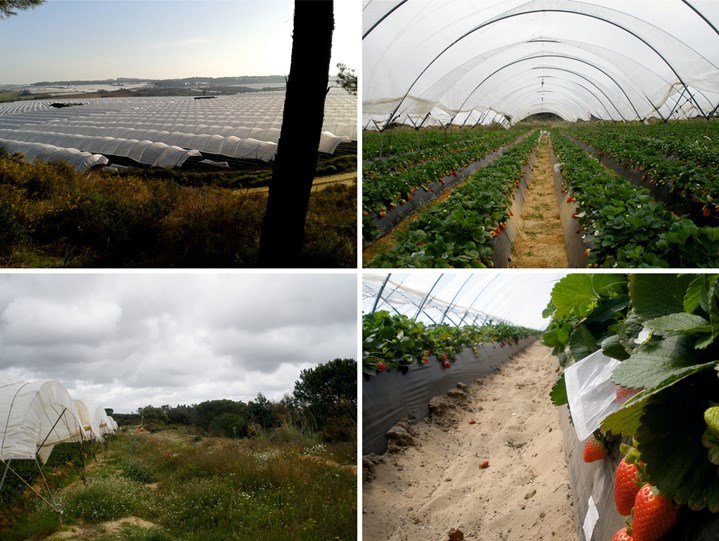Animal-mediated pollination is essential for the production and quality of fruits and seeds of many crops consumed by humans. However, crop pollination services might be compromised when wild pollinators are scarce. Managed pollinators are commonly used in crops to supplement such services with the assumption that they will enhance crop yield. However, information on the spatiotemporal pollinator-dependence of crops is still limited. The contribution of commercial bumble bee colonies compared to the available pollinator community on strawberry (‘Fortuna' variety) flower visitation and strawberry quality across a landscape gradient of agricultural intensification (i.e. polytunnel berry crop cover) was assessed. Colonies of bumble bees were used in winter and in spring, i.e. when few and most wild pollinators are in their flight period, respectively. The placement of colonies increased visits of bumble bees to strawberry flowers, especially in winter. The use of bumble bee colonies did not affect flower visitation by other insects, mainly honey bees, hoverflies and other Diptera. Flower visitation by both honey bees and wild insects did not vary between seasons and was unrelated to the landscape gradient of berry crop cover. Strawberries were of the highest quality (i.e. weight) when insect-mediated pollination was allowed, and their quality was positively related to wild flower visitors in winter but not in spring. However, increased visits to strawberry flowers by managed bumble bees and honey bees had no effect on strawberry weight. These results suggest that the pollination services producing high quality strawberry fruits are provided by the flower visitor community present in the study region without the need to use managed bumble bees. informacion[at]ebd.csic.es Trillo et al (2018) Managed bumble bees increase flower visitation but not fruit weight in polytunnel strawberry crops. Basic Appl Ecol. Doi 10.1016/j.baae.2018.05.008
https://www.sciencedirect.com/science/article/pii/S1439179117304152

 Las altas temperaturas están provocando que las lagunas y las marismas de Doñana pierdan agua rápidamente
Las altas temperaturas están provocando que las lagunas y las marismas de Doñana pierdan agua rápidamente




